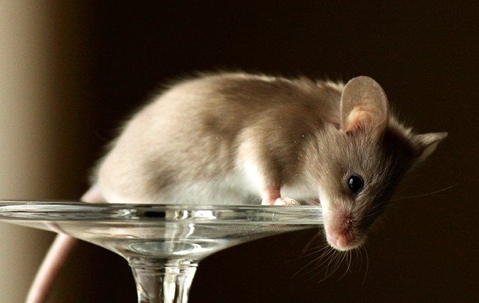The house mouse is the most commonly encountered and economically important rodent found in the United States. They are not only a nuisance but pose significant health and property threats. Light brown to gray with light bellies and pointed muzzles, these miniature invaders are 2 ½ to 3 ¾ inches long with 2 ¾ to 4-inch tails. They eat cereal, seeds, insects, nuts, and fruit and will infiltrate almost any human food.
Damage & Disease
House mice breed rapidly and can adapt quickly to changing conditions. Female mice can give birth to half a dozen babies every three weeks and produce thirty-five young per year. Those litters can begin producing their own young at six weeks of age. Spotting just one mouse in your home almost always means there is an infestation in hiding.
Damage from mice ranges from gnawing marks and burrows to droppings, damaged goods, and unsavory odors. More importantly, these pests carry with them significant health risks, transmitting leptospirosis, lymphocytic choriomeningitis, tularemia, salmonellosis, and hantavirus.
They also threaten indirect transmission of babesiosis, human granulocytic anaplasmosis, Lyme disease, rickettsialpox, relapsing fever, and Rocky Mountain spotted fever.
Reduce Attractants
Eliminating access to food and nesting sites can be an important step in reducing the attractiveness of your home to mice.
- Keep food in thick plastic or metal containers with tight lids.
- Clean up spilled food right away and wash dishes and cooking utensils soon after use, including outdoor cooking areas and grills.
- Always put pet food away after use and resist leaving pet food or water bowls out overnight.
- Keep bird feeders away from the house and use squirrel guards to limit access to feeders.
- Keep compost bins as far as possible from the home - preferably one hundred feet or more.
- Eliminate possible nesting sites outside the home by elevating hay and woodpiles, keeping the grass cut short, and trimming shrubbery within one hundred feet of the home.
Seal Up For Prevention
Mice can squeeze through holes as small as a nickel. To keep them from entering your living space, it is important to fill small holes with steel wool and caulk to keep it in place. For larger openings use lath screen or lath metal, cement hardware, cloth, or metal sheeting. Flashing around the base of your house, outbuildings, and garages are also important.
Check the following locations both inside and outside your home for any gaps or holes:
- Inside, under, and behind kitchen cabinets, refrigerators, and stoves
- Inside closets, especially near floor corners
- Around fireplaces, doors, and windows
- Around pipes, under sinks, and around washing machines
- Near water heaters and furnaces
- Around floor vents and dryer vents
- In roof among rafters, gables, and eaves
- Around foundation, attic vents, and crawlspaces
- Around holes for electrical, plumbing, cable, and gas lines
Trapping
Taking on an existing population will most likely involve trapping. Choose an appropriate snap trap and make sure to read the manufacturer's instructions. Place a small amount of peanut butter on the pan and position traps so they form a “T” with the wall. Rodents feel safer running along walls or objects and do not like being in the open. Set traps in attics, basements, and crawlspaces or other areas that do not have regular human traffic.
Be mindful of potential danger to children and pets. Target areas that have evidence of frequent rodent activity. It is wise to also place traps in outbuildings and other areas that might serve as rodent shelters. Be aware that trapping itself is not sufficient. You must prevent new rodents from entering.
Clean Up
If mice have made it into your home it is important to sanitize the area as soon as possible. Ventilate the space by opening doors and windows for at least 30 minutes to allow fresh air to enter the area. Use cross-ventilation whenever possible and do not stir up dust by sweeping or vacuuming droppings, urine, or nesting materials. Make sure to wear rubber, latex or vinyl gloves. Spray urine and droppings with a disinfectant or a mix of bleach and water and let soak for five minutes. Use paper towels to pick up residue and dispose of them immediately. Disinfect all items that may have been contaminated. Mop and clean countertops with disinfectant or bleach. Any furniture or carpets with evidence of exposure should be steam cleaned or shampooed.
Get Help Today
The best way to keep mice out of your home or to get rid of those that have already found a way in is with assistance from the professionals at RAM Pest Control Our family-owned and operated service company specializes in pest control and wildlife management intending to exceed our customer’s expectations. We take pride in our effective and courteous pest control and have the education and real-world experience to provide creative solutions to help you live with the natural world. With 24/365 same day service and 25 years of experience, RAM Pest Control. will help you control unwanted wildlife.
Request Your Free Inspection
Contact Us today to get your free inspection!

